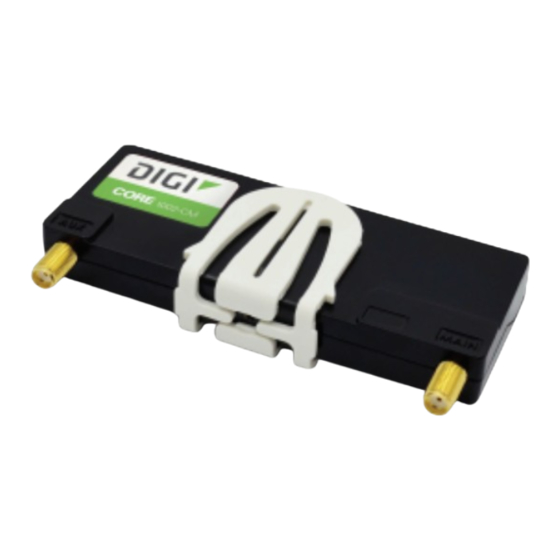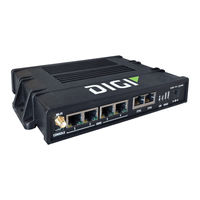
Digi Connect EZ 4i Serial Server Manuals
Manuals and User Guides for Digi Connect EZ 4i Serial Server. We have 2 Digi Connect EZ 4i Serial Server manuals available for free PDF download: User Manual
Digi Connect EZ 4i User Manual (1045 pages)
Brand: Digi
|
Category: Network Router
|
Size: 15 MB
Table of Contents
-
Enable Wi-Fi23
-
Hardware28
-
Back Panel31
-
Bottom Panel31
-
Local Webui43
-
Interfaces57
-
Delete a LAN176
-
DHCP Servers178
-
Bridging207
-
Serial Port217
-
Routing346
-
IP Routing347
-
Routing Services361
-
Dynamic DNS365
-
Vrrp370
-
Configure VRRP370
-
Configure VRRP373
-
Ipsec394
-
Ipsec Mode394
-
Ipsec Modes394
-
Authentication395
-
Openvpn459
-
Show GRE Tunnels506
-
L2Tp529
-
L2TP with Ipsec539
-
L2Tpv3 Ethernet541
-
Macsec547
-
Nemo549
-
Show NEMO Status554
-
Wireguard VPN555
-
Configure DNS589
-
Show DNS Server594
-
SNMP Security596
-
Download Mibs601
-
Modbus Gateway632
-
System Time649
-
Python Modules686
-
Local Users754
-
Ldap780
-
Packet Filtering814
-
Web Filtering838
-
Downgrading852
-
Enable FIPS Mode869
-
Intelliflow891
-
Pinhole Method921
-
Learn more927
-
File System928
-
View System Logs944
-
View Event Logs946
-
The Help Command981
-
Show Config987
-
Show System987
-
Show Network988
-
Analyzer Clear1003
-
Analyzer Save1003
-
Analyzer Start1003
-
Analyzer Stop1003
-
Cat1003
-
Clear Dhcp-Lease Mac1004
-
Grep1004
-
Help1005
-
Mkdir1007
-
Modem at1007
-
Modem At-Interactive1007
-
Modem Firmware Check1007
-
Modem Firmware List1007
Advertisement
Digi Connect EZ 4i User Manual (932 pages)
Brand: Digi
|
Category: Network Router
|
Size: 13 MB
Table of Contents
-
Enable Wi-Fi22
-
Hardware31
-
Back Panel34
-
Bottom Panel34
-
Local Webui43
-
Interfaces57
-
Configure a LAN128
-
Delete a LAN146
-
DHCP Servers147
-
Bridging167
-
Serial Port175
-
Wi-Fi216
-
Hotspot Security263
-
Routing310
-
IP Routing311
-
Routing Services324
-
Dynamic DNS328
-
Vrrp333
-
Configure VRRP333
-
Configure VRRP336
-
Ipsec356
-
Ipsec Mode356
-
Ipsec Modes356
-
Authentication357
-
Openvpn407
-
Show GRE Tunnels441
-
L2Tp457
-
L2TP with Ipsec473
-
L2Tpv3 Ethernet475
-
Nemo480
-
Show NEMO Status485
-
Configure DNS513
-
Show DNS Server518
-
SNMP Security520
-
Download Mibs524
-
Modbus Gateway554
-
System Time571
-
Local Users667
-
Ldap692
-
Packet Filtering725
-
Downgrading753
-
Intelliflow787
-
Learn more814
-
File System816
-
View System Logs828
-
View Event Logs830
-
The Help Command861
-
Show Config866
-
Show System867
-
Show Network867
-
Analyzer Clear883
-
Analyzer Save884
-
Analyzer Start884
-
Analyzer Stop884
-
Help885
-
Mkdir887
-
Modem at887
Advertisement

